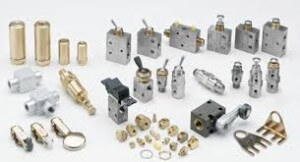The four most important things to consider when designing a valve
February 25, 2014 |

It’s no secret that valve manufacturing has come a long way in the last decade or so. With so many appealing options to choose from, selecting the right kind of steel or alloy is crucial because it can dramatically impact the cost and life span of the equipment being deployed. To make things more complicated it’s not only a matter of simple cost and quality. Finding the most expensive fit can sometimes be the worst fit and the most complex alloys can actually hurt the quality long-term.
While there’s certainly no, single ‘magic bullet’ to finding the right kind of steel or alloy for your valve, there are some general things to consider while you do so, some of which we have outlined below. Because of the difficulty and importance of the selection process of metals – here’s a general guide for you to follow that will help serve as a guidepost.
Corrosion resistance
Corrosion is one of the most important factors to take into consideration when choosing your steel. A number of environmental influences can determine what kind of metal or alloy you use. The most expensive option isn’t always the best – but generally speaking, you almost always want to err on the side of lifespan – particularly if the valve will be handling any kind of toxic material. If not, then you can generally shop with cost-savings in mind.
Mechanical properties
Strength is a wildly important property to take into consideration in the metal selection process. There may be pressure concerns to take into consideration that can tire the steel and in some cases – rupture it entirely. Impact resistance, hardness and ductility are all factors to take into account.
Fabrication
Fabrication essentially dictates how well the steel is going to hold together. You can weld metal, forge it, machine it or even cold form it. Still, it’s necessary to know whether those processes will be difficult, how the steel will be affected during the process and whether or not the quality of the alloy can be damaged.
Cost
The age-old manufacturing balancing act of cost vs. performance is always taken into consideration. In metal selection, however – the most expensive isn’t always the best fit for the project. The best metal is. Finding that balance is essential to any long-term project.
For more information about valves, visit Diffley-Wright.com
